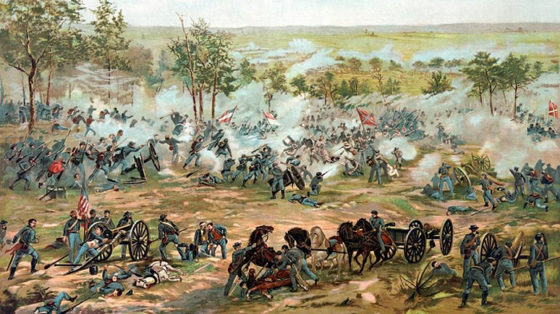
“A baby-faced infantryman from Phoenix, Ariz. was the creative genius behind Willie and Joe, perhaps the best-loved comic strip to come out of World War Two.”
PICTURE TWO SOAKING AND EXHAUSTED GIs squatting in a mud-filled ditch.
“Yesterday, you saved my life and I swore I’d pay you back,” one says to the other. “Here’s my last pair of dry socks.”
That was a just one of the many fictional yet real-world-inspired wartime moments that were amusingly immortalized by William Henry “Bill” Mauldlin, history’s most famous ‘fighting cartoonist.’
The baby-faced infantryman from Phoenix, Ariz. was the creative genius behind Willie and Joe, perhaps the best-loved comic strip to come out of World War Two.

The popular single-panel cartoon focused on the trials and tribulations of a pair of bearded and beat up riflemen as they survived life on the front lines. Not surprisingly, the biting and honest humour was a huge hit with the rank-and-file and helped keep soldiers’ spirits up during some of the conflict’s darkest days. In fact, many combat veterans said they couldn’t have made it through the hell without a daily chuckle from the famous anti-heroes. [1]
Willie and Joe Go To War
Surprisingly, becoming the voice of war-weary GIs couldn’t have been further from Bill Mauldin’s mind when he signed up for the National Guard in 1940. But as the 19-year-old Chicago Academy of Fine Art-trained illustrator became a citizen soldier, he turned his considerable talents (not to mention his wry wit) to capturing the gritty and absurd reality of life in uniform.
By the time Mauldin landed on the beaches of Sicily with the 45th Infantry in 1943, his doodles were appearing regularly in the division’s own newspaper. Soldiers immediately identified with his characters Willie and Joe; many saw their own experiences reflected in the misadventures of Mauldin’s disheveled duo.
And as the 45th pushed on into Italy, the young cartoonist was made a full-fledged combat correspondent. But while many in the army press corps documented the fighting with typewriters and cameras, Mauldin used a sketchpad and drawing pencils. He liked to stay close to the action too, mostly to maintain the authenticity of his work. In fact, while crouching in a foxhole with some GIs near Monte Cassino in the fall of 1943, he was peppered with German mortar fragments. While Mauldin’s wounds were non-life-threatening, the experience only added to his comic strips’ authority. No one could say the artist behind Willie and Joe didn’t know soldiers’ sufferings – he shared them.
Famous Dogfaces
In early 1944, Mauldin was transferred to the staff of Stars and Stripes, the official newspaper of the U.S. military. Fighting men across the ETO were soon reading Willie and Joe six times a week. Interestingly enough, the paper’s editors gave the junior cartoonist free rein to ‘tell it like it was’ in his illustrations.
But of course not everyone in the army was laughing about Mauldin’s fractured take on life in uniform.
General George S. Patton once flew into a fit after the GI artist lampooned the spit-and-polish commander’s famous standing order that soldiers under his command shave daily, even when in combat zones. “Ol’ Blood and Guts” tried to have the paper shut the strip down unless Willie and Joe cleaned up their act. It took the intervention of none other than General Dwight Eisenhower himself to save the series. Despite the cartoon’s sometimes-subversive satire, most higher ups recognized it for what it was: a potent tonic for morale.
By 1944, the comics were appearing in stateside newspapers too. Many felt the drawings helped convey the misery and hardship soldiers on the line faced every day. And not surprisingly, Willie and Joe was just as big a hit with civilians as it was with ground pounders. In fact, in 1945 Mauldin’s work earned him not only the Legion of Merit citation but a Pulitzer Prize. Time magazine even devoted one of its covers to Willie and Joe. That same year, Mauldin released a compendium of the best of his 600 cartoons to date entitled Up Front. It was a best seller.
After the War
Mauldin continued his reporting right up to VE Day. He briefly considered killing off his two famous characters in the last issue of the war believing it would serve as a poignant reminder of the true cost of victory. The plan was scuttled however at the insistence of editors.
After the war, Mauldin became a freelance writer and in 1956 even ran (unsuccessfully) as the Democratic Party’s candidate for New York’s 28th Congressional district.
He worked as a cartoonist for a number of dailies before joining the staff of the Chicago Sun Times where he won his second Pulitzer in 1961. He retired from the paper in 1991 at the age of 70.
While Willie and Joe ended its run in 1945, Mauldin occasionally revived his iconic characters over the years. The duo popped up in the funny pages to commemorate the deaths of generals Omar Bradley and George C. Marshall. Their last appearance came on Veterans Day in 1998 with a rare cameo in Charles M. Schultz’ famous Peanuts comic strip. The legendary Charlie Brown creator was also a World War Two veteran and was a huge fan of Willie and Joe. (SEE IT HERE).
Mauldin died in 2003 of complications from Alzheimer’s disease. He was 81.

For a more Willie and Joe cartoons, visit the American World War Two Orphans Network (HERE).
SOURCES
http://www.loc.gov/rr/print/swann/mauldin/mauldin-atwar.html
http://www.awon.org/willie/willie2.html
http://en.wikipedia.org/wiki/Bill_Mauldin
http://spartacus-educational.com/ARTmauldin.htm
http://www.pbs.org/wgbh/americanexperience/features/photo-gallery/warletters-cartoons/
(Originally published in 2015)













I proudly have my 1945 copy of “Up Front” standing in my library.
Bill Mauldin was a co star with Audie Murphy in “Red Badge of Courage”